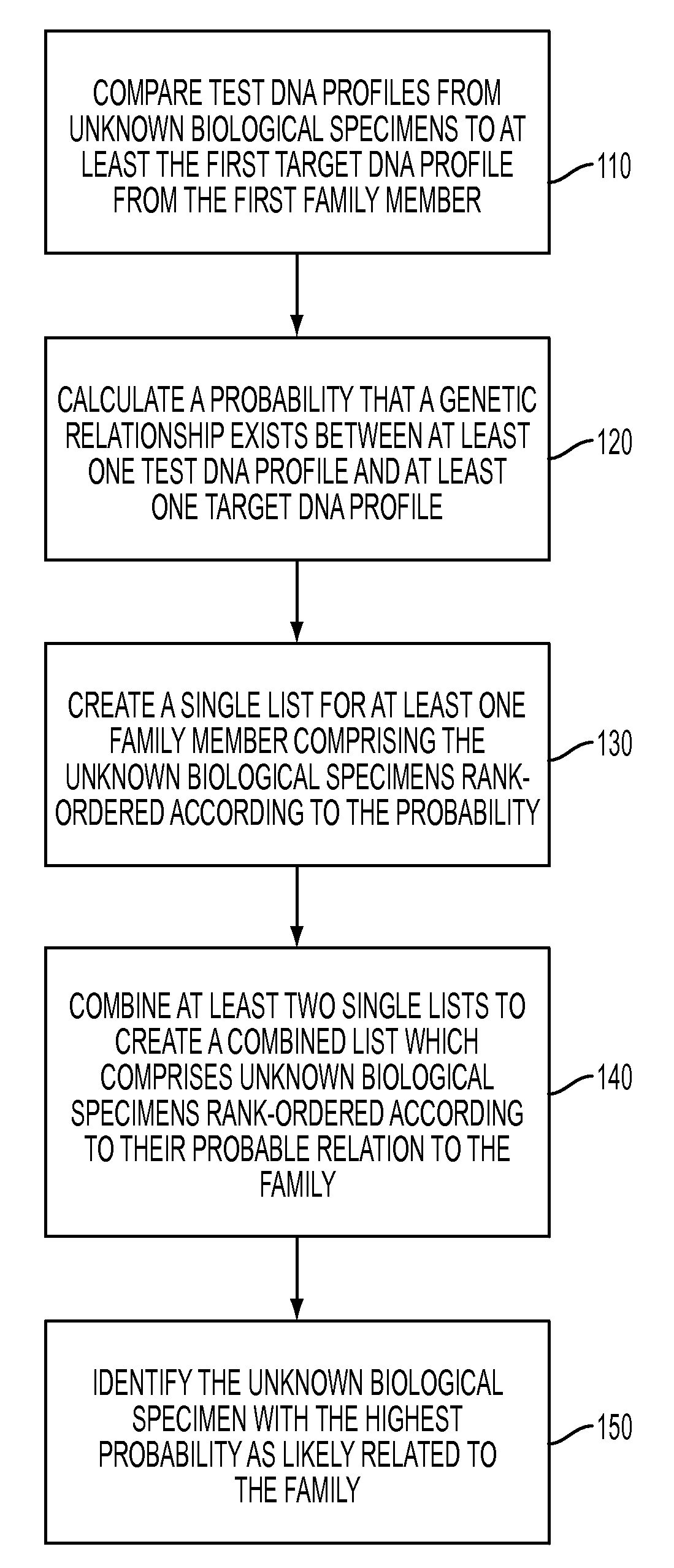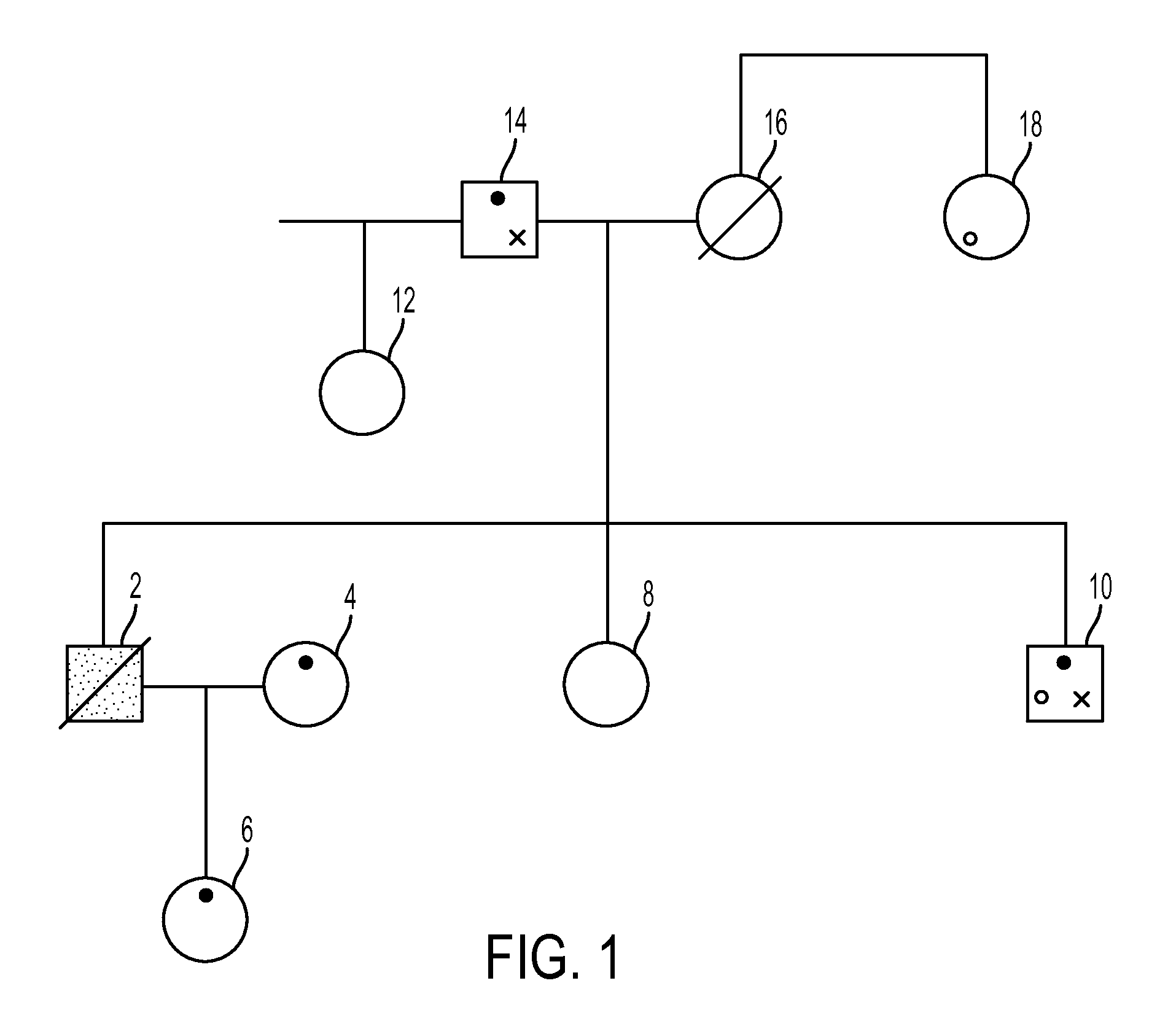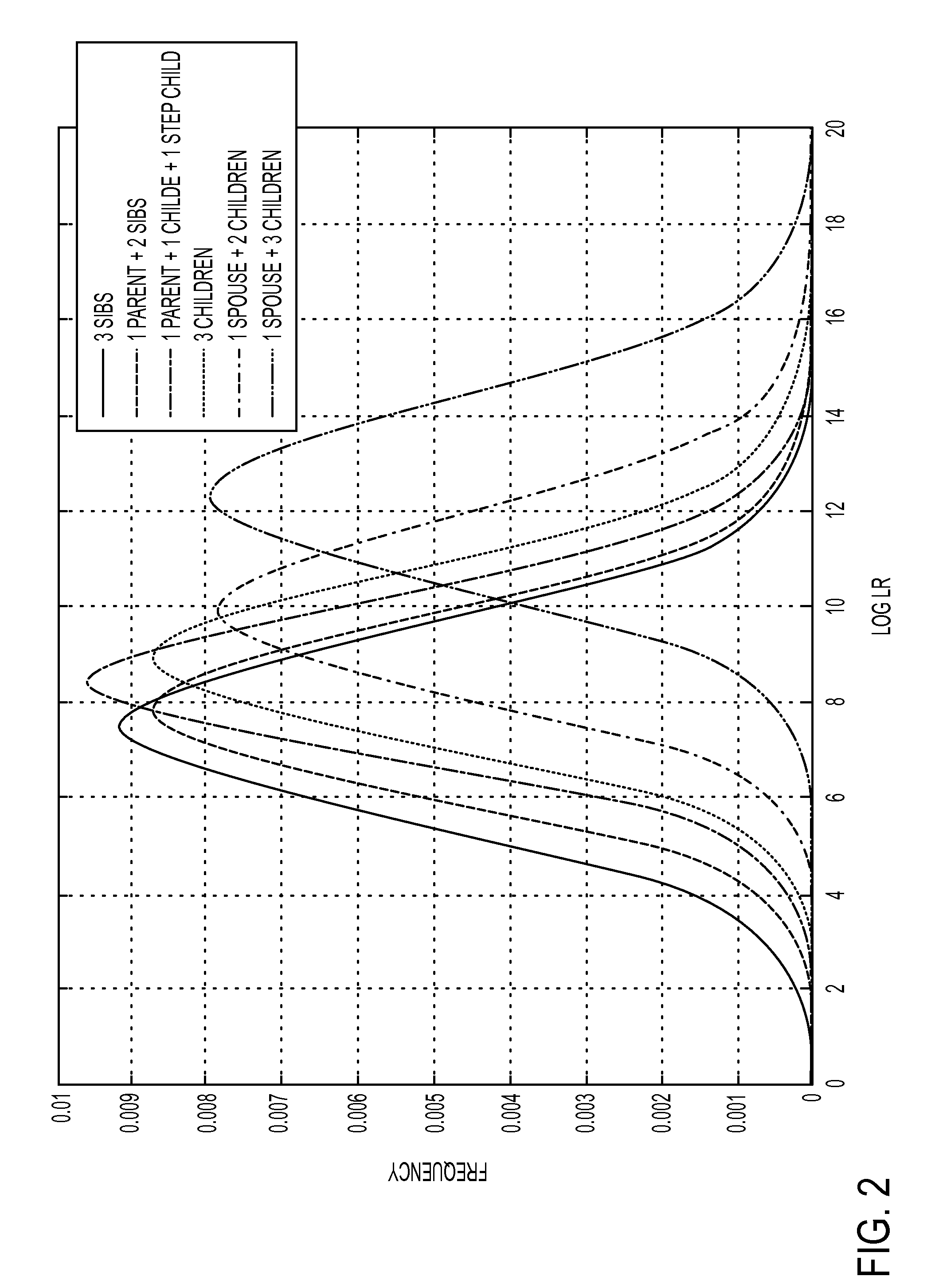Automated decision support for associating an unknown biological specimen with a family
a technology of automatic decision support and unknown biological specimens, applied in the field of automatic decision support for associating unknown biological specimens with families, can solve the problems of incomplete dna profiles, approach breakdown, and demands on forensic scientists, and achieve the effect of maximizing the relative probability of obtaining a high probability of obtaining a correct match
- Summary
- Abstract
- Description
- Claims
- Application Information
AI Technical Summary
Benefits of technology
Problems solved by technology
Method used
Image
Examples
Embodiment Construction
[0007]Several embodiments are discussed herein which provide methods of associating an unknown biological specimen with a particular family. Automated decision support may aid forensic scientists to select enough and the correct individuals related to a missing person, disaster victim or other remains for DNA typing. The relative importance of different combinations of relatives to a missing person and of different combinations of DNA typing technologies is used in automated decision support to replace guess work for selecting relatives to type and DNA typing technology processes to be used for typing a given selected relative. Automated decision support for selecting family relatives to a missing person maximizes the relative likelihood of obtaining a high probability of obtaining a correct match between a missing person and a family. The output of the process may be a pedigree likelihood ratio (PLR) based on the totality of selected multiple relatives' DNA profiles.
[0008]In one em...
PUM
 Login to View More
Login to View More Abstract
Description
Claims
Application Information
 Login to View More
Login to View More - R&D
- Intellectual Property
- Life Sciences
- Materials
- Tech Scout
- Unparalleled Data Quality
- Higher Quality Content
- 60% Fewer Hallucinations
Browse by: Latest US Patents, China's latest patents, Technical Efficacy Thesaurus, Application Domain, Technology Topic, Popular Technical Reports.
© 2025 PatSnap. All rights reserved.Legal|Privacy policy|Modern Slavery Act Transparency Statement|Sitemap|About US| Contact US: help@patsnap.com



